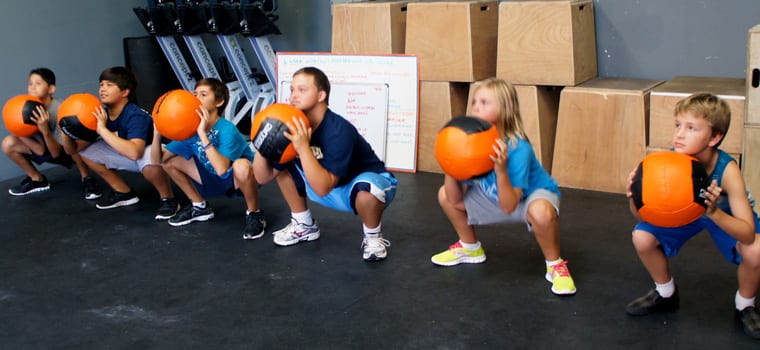Strength training has proven to be a safe and effective method of conditioning for adults. The popularity of this type of exercise has trickled down to children and adolescents as a way to improve health, fitness and sports performance. As parents, coaches and health providers, the questions that should be asked are: Is it okay for children and adolescents to be involved in strength training? And if so, what are some guidelines to ensure that it is safe, beneficial and enjoyable?
Many myths regarding the dangers of strength training on growing bones and the cardiovascular system of healthy kids have been dispelled by recent research. As outlined by the American Academy of Pediatrics and American College of Sports Medicine, when done properly, strength training has been shown to be safe and effective. That is not to say strength training is without any risk of injury, not unlike any other exercise activity. By following the guidelines described below, strength training can have many potential benefits for children, including enhancing physical and psychosocial development, improving muscular coordination, lowering injury risk in other sports, and preventing obesity, diabetes and other chronic medical illnesses which are currently on an alarming rise in children.
Strength training does not need to occur in a dimly lit, hot, smelly weight room. It should be done in a safe environment free of hazards. Also, strength training can be done by using a variety of modalities including body weight exercises (eg. push ups), rubber tubing, medicine balls, free weights or weight machines. Strength training should be done in conjunction with aerobic activities, such as jogging and biking, for balanced fitness. Proper diet and adequate hydration should also be emphasized.
- Your child should have a medical evaluation by his or her primary care physician before a strength training program is begun.
- Qualified adults should be providing supervision and instruction at all times. This includes using spotters when necessary. Most injuries to children in weight rooms occur when there is no supervision.
- Children should wear appropriate clothing and footwear.
- Realistic goals, consistent with the physical abilities and emotional maturity of the child, should be established.
- Warm up by doing at least 10 minutes of light aerobic activity and stretching. Examples include riding a stationary bike, jogging in place, doing jumping jacks or jumping rope. A similar cool down period should be included at the end of strength training.
- Specific exercises should be learned initially with no load (resistance). An example would be to learn how to bench press with a light bar or broom stick. Once the skill is mastered, incremental loads can be added.
Encourage success by choosing appropriate exercises and workloads for each individual child. - Focus on proper technique instead of the amount of weight lifted. Children and adolescents should avoid competitive weight lifting, power lifting, body building, and maximal lifts until they reach skeletal maturity. This usually occurs sometime into puberty, but your primary care physician or sports medicine specialist can help you determine skeletal maturity.
- A good strengthening program should address all major muscle groups and exercise through the complete range of motion.
- A child should be able to successfully complete 8-15 repetitions using good form before being able to increase weight or resistance. Limiting the amount of a particular exercise to 1-3 sets is encouraged.
- To achieve strength gains and prevent injury, workouts should last about 20-30 minutes, 2-3 times per week with rest periods in between. There is no benefit to strength training children more than 4 times per week.
- Any signs of illness or injury should be evaluated before continuing the exercise in question.
Remember, the goal of strength training is not to build muscle mass and turn children into “The ROCK,” but instead to improve strength, coordination and fitness in an enjoyable, safe and healthy environment.









